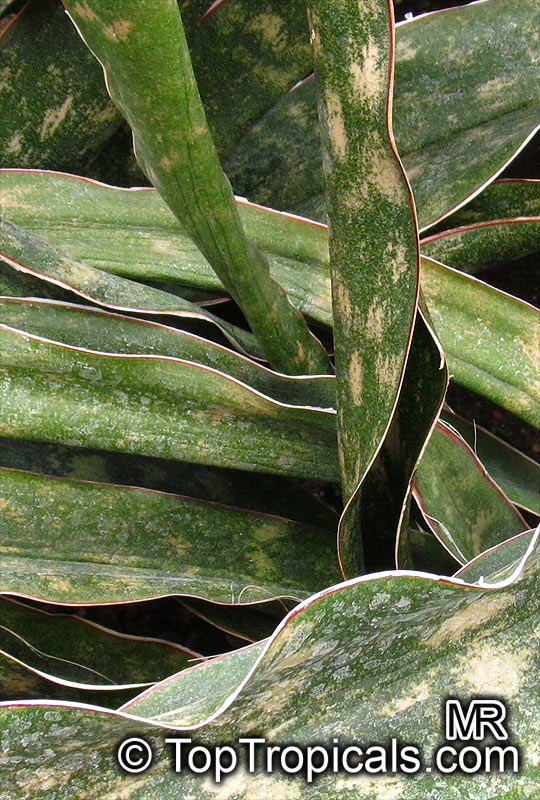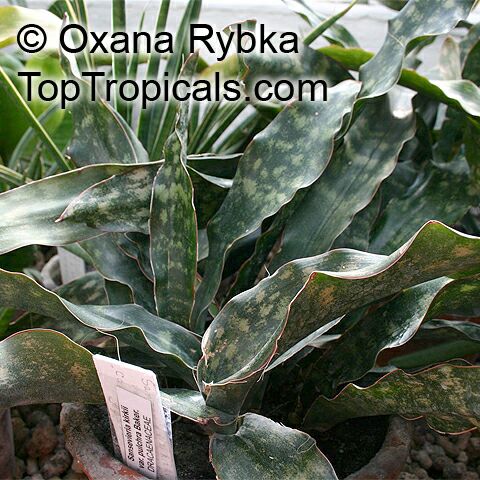Sansevieria kirkii (Star Sansevieria)
Top Tropicals Plant Encyclopedia
Botanical name: Sansevieria kirkii
Common names: Star Sansevieria, Spotted Snake Plant
Family: Asparagaceae (Formerly:Dracaenaceae / Liliaceae / Agavaceae)
Subfamily: Nolinoideae
Origin: East Africa






Sansevieria kirkii is a short, small, and sturdy perennial shrub with a clumping habit, native to East Africa and particularly Tanzania and Kenya. It typically grows up to 2-5 ft tall, with rigid, succulent, and spiky leaves that have a mottled pattern of light green and dark green, giving it a pineapple-like appearance. These attractive leaves add a sculptural form and dramatic interest as an ornamental foliage in most gardens.
To ensure optimal growth results, the Sansevieria kirkii should be planted in USDA Zone 9-11 in a sunny location, about 2-3 ft apart since it has a fast growth rate and will spread and clump over time. It can also be used to create minor obstructions as barriers around pathways. While this plant prefers full sun, it can take some partial shade but will require more frequent watering. Moderate amounts of water should usually suffice since it is a drought-tolerant plant and able to survive long periods of low soil moisture levels. Fertilizing is usually not needed, but can be beneficial to the plant's growth if the soil lacks adequate nutrients.
Like other plants, Sansevieria kirkii is susceptible to specific pests and diseases. Mealybugs, aphids, and other pests may live on the underside of the foliage, and dietary deficiencies of calcium, iron, and magnesium may also affect its health. To protect the plant from root rot, make sure the soil is well-draining and free from standing water.
This plant is unique from its perennial cousins in that it has white and off-white fragrant blooms which appear during springtime and bloom throughout the season. These blooms are larger and bright white clusters on a stalk in the center of the plant.
Though it is easy to propagate, Sansevieria kirkii will do well in a pot in areas with colder temperatures. To protect the soil from extreme cold, you should mulch the pot, and in late autumn, repot it in a pot itself in a potting mixture that provides good drainage. During colder weather, provide bright and filtered light, and misting may help invigorate foliage and encourage blooming. It should be repotted every 3-4 years and fed with a balanced fertilizer in the Spring and Summer months.
Similar plants: Sansevieria kirkii (Star Sansevieria)
- Dracaena angolensis (Snake Plant)
- Sansevieria ballyi (Dwarf Sansevieria)
- Sansevieria dooneri (Dwarf Sansevieria)
- Sansevieria gracilis (Snake Plant)
- Sansevieria liberica (Kaba Kara)
- Sansevieria masoniana (Giant Variegated Whale Tail)
- Sansevieria sp. (Mother-in-law's Tongue)
- Sansevieria trifasciata (Birds Nest Sanseviera)


